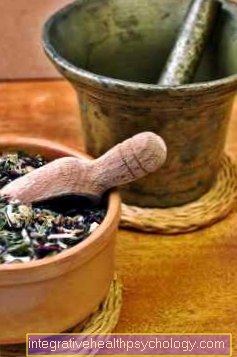sandalwood

Butterfly family
Latin: Pterocarpus santalinus
Plant description
The stately tree grows wild and in cultures India and up Ceylon. It has pinnate leaves, the leaflets of which are up to 10 cm long. The small Butterfly flowers are veined yellow and red. The fruit, one Legume, lignified and winged is spread by the wind. In the event of injury, occurs from inside the trees red juice out.
The red sandalwood differs from the fragrant one white sandalwood. It is not related to im; its heartwood contains a rose-scented heartwood volatile oil. You write him a slight disinfecting effect on the lower urinary tract to, but it is not used medically.
Plant parts used medicinally
This is medicinally freed from the sapwood red heartwood used. It is sold in larger blocks or logs and is then shredded. Sandalwood has a silky sheen, only smells aromatic when rubbed, tasteless and easily split.
Ingredients: The most important ingredient is the finely crystalline Santalin, a red dye.
Medicinal effect and application
A medicinal effect can be found in the red sandalwood not prove. Nevertheless, it was and is still today in shredded form as a decorative addition to some Tea blends added. It is only given a weak, dehydrating effect. The silky, shiny, blood-red pieces of wood make colorless tea blends more attractive and thus supposedly easier to sell.
Side effects are not to be expected.





























